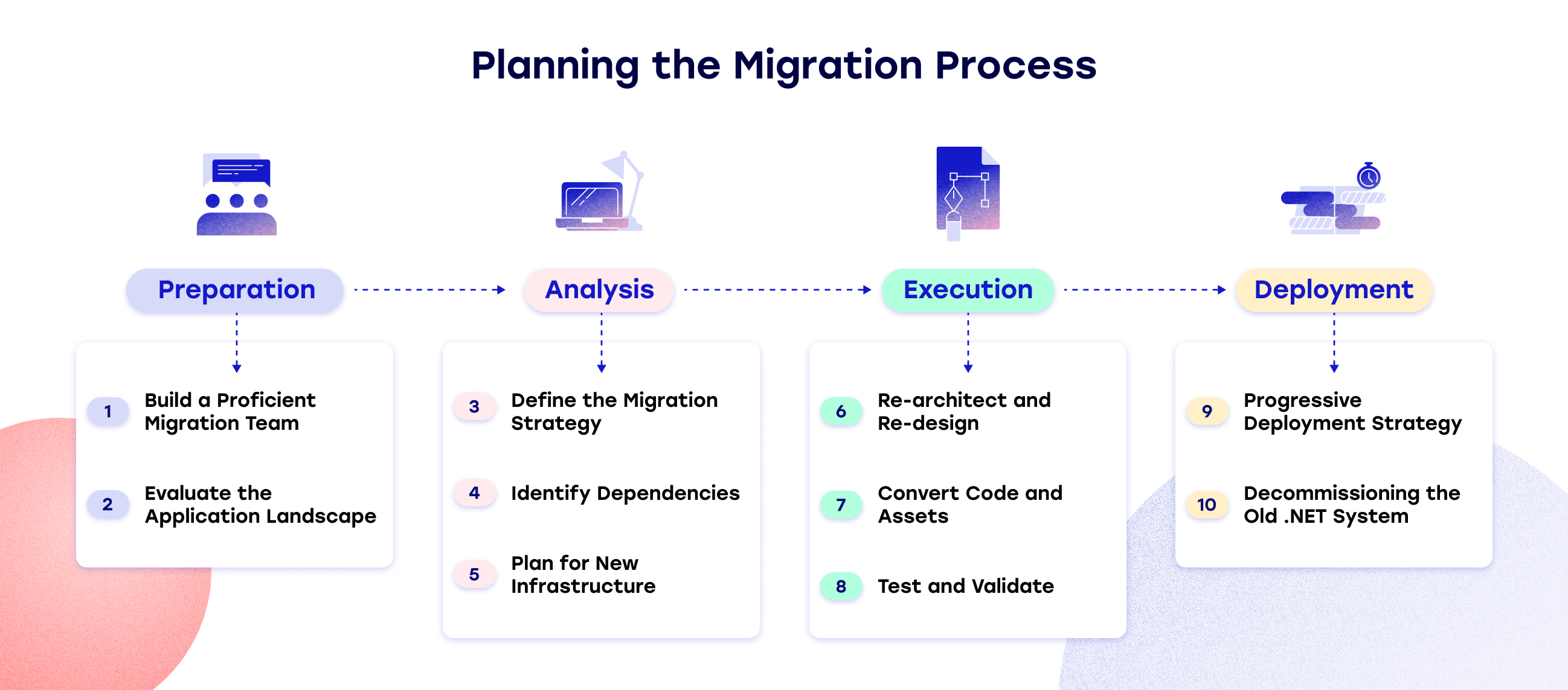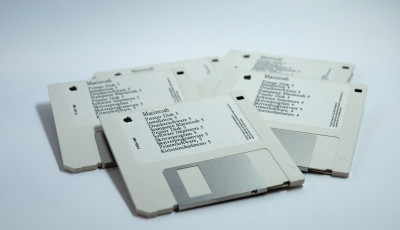Businesses must often adapt and evolve their software systems to meet changing demands. One such challenge is migrating from .NET to Java, two popular and powerful programming frameworks.
Both .NET and Java are robust and capable frameworks for building a wide range of software applications.
However, there are two main reasons companies migrate to Java:
- Legacy Integration: A company with existing systems or third-party software that integrate better with Java-based solutions might choose to migrate for better interoperability.
- Strategic Shift: Sometimes, a company undergoes a strategic shift, such as a merger or acquisition, that necessitates a change in technology stack to align with the new corporate strategy.
As an experienced company in technology migration, Helmes understands the intricacies and challenges involved in transitioning from .NET to Java. In this article, we will share some insights and tips to guide you through the process of migrating your system.
The Migration Process

Build a Proficient Migration Team
Form a dedicated team of Java and .NET experts with hands-on experience executing similar migration projects. Their specialized skill set and practical experience will be instrumental in ensuring a smooth and effective migration process.
Evaluate the Application Landscape
Begin by assessing your existing .NET application landscape. Identify the application’s size, complexity, dependencies, and third-party integrations. This evaluation will help determine the scope and effort required for the migration process.
Define the Migration Strategy
Choose an appropriate migration strategy based on your business requirements and available resources. Options include a complete rewrite, partial migration, or a phased approach where both platforms coexist during the transition.
Identify Dependencies
Analyze the dependencies within your .NET application. Identify any external libraries, frameworks, or APIs tightly coupled to the .NET platform. These dependencies may require rewriting or finding Java equivalents.
Plan for New Infrastructure
This presents an excellent opportunity to transition your system, possibly to a cloud-based infrastructure. Consider factors such as capacity, compatibility, scalability, and cloud options to ensure a seamless migration and long-term support for the system.
Re-architect and Re-Design
During the migration, consider optimizing and re-architecting the application to align with best practices. This may involve rethinking the application’s architecture, decoupling components, and leveraging specific design patterns.
Convert Code and Assets
Migrating code from .NET to Java involves translating the existing .NET codebase to Java syntax. This process requires careful attention to detail, as the syntax and APIs differ between the two platforms.
Test and Validate
Comprehensive testing is crucial to ensure the functionality and stability of the migrated application. Establish a robust testing plan, including unit tests, integration tests, and system testing, to identify and address issues as early as possible during the migration.
Progressive Deployment Strategy
Opting for a gradual rollout strategy instead of a big-bang release can often yield more favorable results. In this approach, a limited number of users initially access the new system, with gradual expansion over time.
This approach offers several advantages, including the ability to validate the system’s performance under increasing loads, address and rectify issues with minimal user impact, enhance quality and build customer trust by deploying versions that have undergone successful production use elsewhere, and reduce the likelihood of significant business disruption necessitating version rollbacks.
It’s important to note the tradeoff: this approach requires issue resolution in both systems and generally precludes planning for new features during this period.
Decommissioning the Old .NET System
As a crucial step in the migration process, carefully plan the decommissioning of the old .NET system. This includes data migration, ensuring the smooth transition of users and processes to the new system, and formally retiring the legacy infrastructure to reduce maintenance costs and streamline resources for the future.
Tips and tricks from Helmes software architects
Lack of ‘async’ and ‘await’ keywords in Java
Functional Programming: Unlike .NET, Java lacks the familiar ‘async’ and ‘await’ keywords for managing asynchronous operations. Developers migrating from .NET may work with a more functional programming paradigm in Java.
Library Compatibility
Some external libraries may not fully support asynchronous flows in Java, leading to additional code complexities. For instance, tools like Serilog’s ForContext work seamlessly with asynchronous methods in .NET, but an equivalent tool, MDC, in Java, requires additional effort.
Consideration
It’s essential to weigh the benefits of asynchronous programming against the learning curve and library compatibility. Depending on your project’s needs, you might consider alternative approaches if the asynchronous support in Java proves challenging.
Unified Test Cases
Establishing shared test cases that connect old and new systems to identical external data sources and microservices can prove immensely advantageous. This approach facilitates straightforward comparisons of system operations using the same dataset, eliminates discrepancies resulting from dissimilar test cases, and expedites issue resolution by hastening response times to reported problems.
Integration Tests
Integration tests play a crucial role in ensuring the correctness and consistency of your application during migration. They allow you to verify that your Java application’s responses match those of the .NET counterpart. Integration tests can be instrumental in adopting a Test-Driven Development (TDD) approach. They facilitate faster development by providing immediate feedback and helping you maintain code quality throughout the migration process.
Engage .NET and Java Expertise
In certain scenarios, having team members with knowledge of both .NET and Java is pivotal. This ensures a comprehensive understanding of the original code before embarking on the migration process, allowing for a smoother transition and alignment with best practices.
Conclusion
Migrating from .NET to Java can be challenging, but with careful planning, a well-defined strategy, and proper execution, it is very much possible. Successful migration requires a deep understanding of both platforms, thorough testing, and the commitment to address any issues arising during the process. By following a structured approach and leveraging the expertise of experienced developers, you can navigate the migration process smoothly and unlock the full potential of Java for your software systems.
If you are considering a migration from .NET to Java and find yourself facing the challenges mentioned above, don’t hesitate to reach out to Helmes. With a team of skilled developers and a wealth of experience handling complex migrations, we can provide the guidance and support you need to ensure a successful transition.
Let us help you unlock the full potential of Java for your software systems while ensuring a seamless and efficient migration process. Contact us to discuss your specific requirements and embark on a journey towards enhanced performance and scalability.
Get in touch



